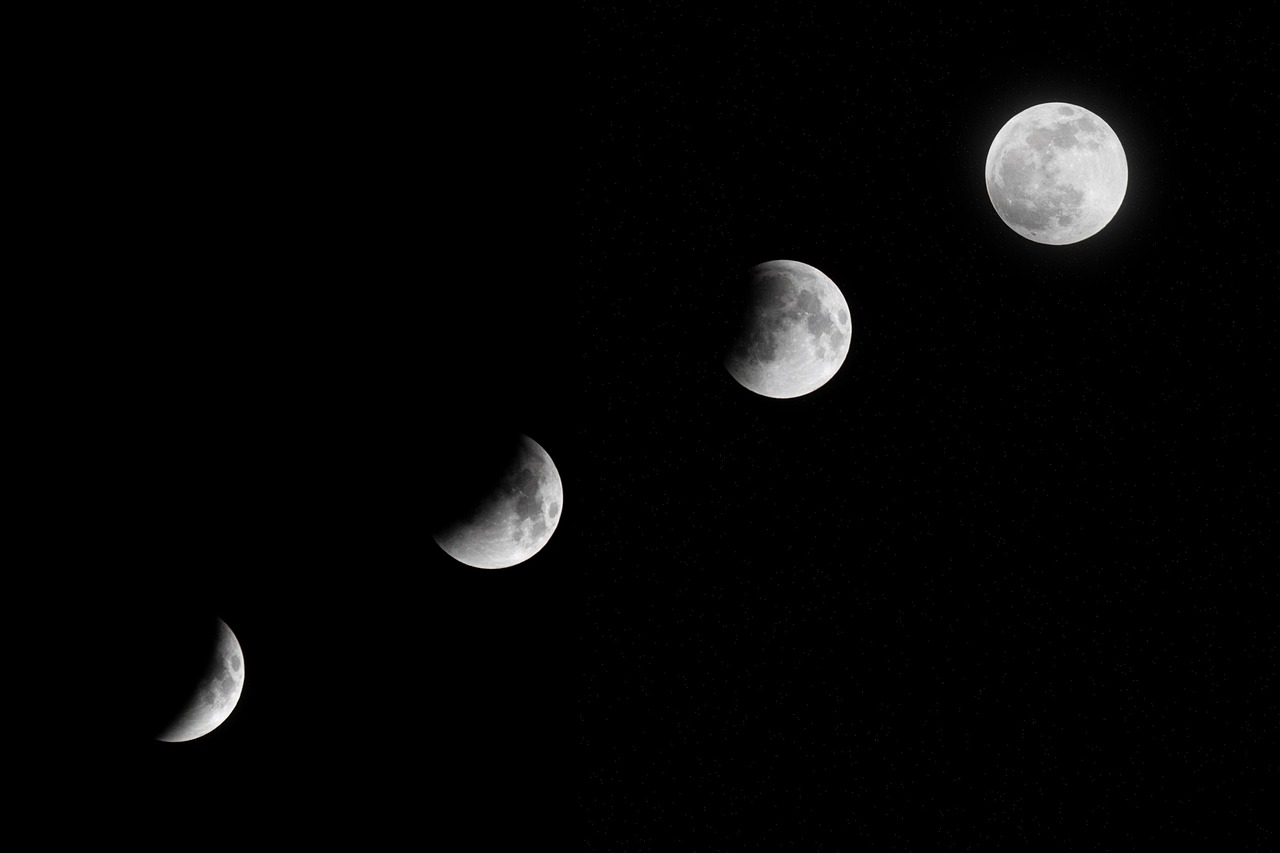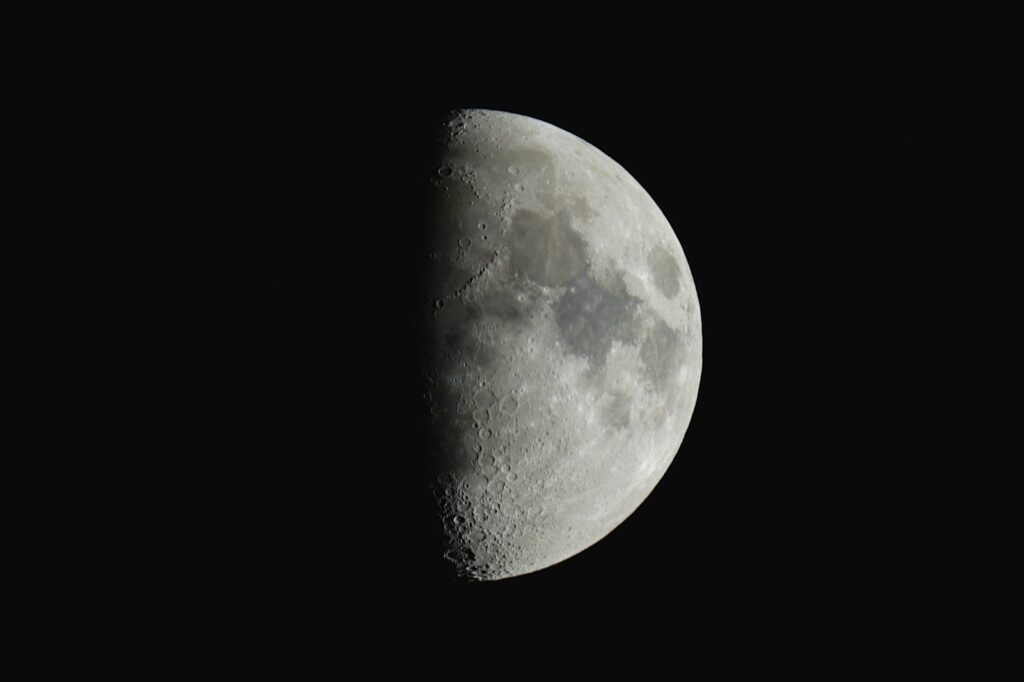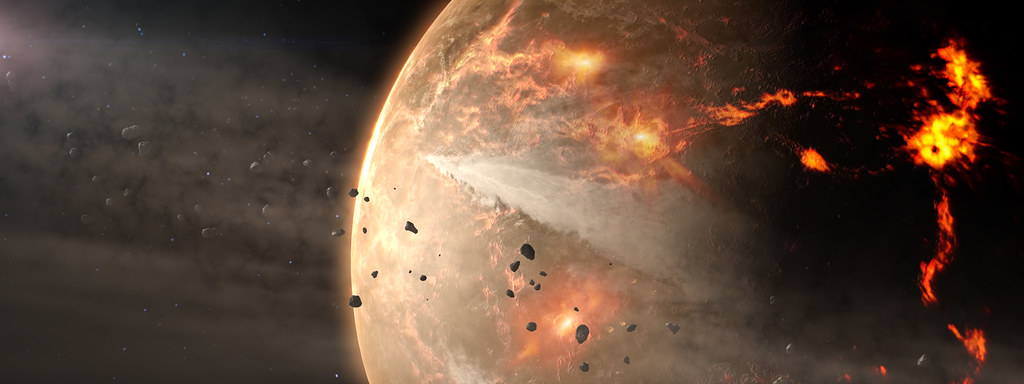Every night, when you glance up at the glowing orb hanging in the darkness, you’re witnessing one of the most powerful forces shaping life on Earth. The Moon isn’t just a beautiful celestial decoration – it’s actively influencing your body, your emotions, and your very existence in ways that modern science is only beginning to understand. While ancient civilizations revered lunar cycles and planned their lives around them, we’ve somehow forgotten that this cosmic companion is still pulling the strings of our daily existence.
The Hidden Tidal Forces Within Your Body
Your body is roughly 60% water, making you essentially a walking ocean that responds to the same gravitational forces that move the seas. Just as the Moon tugs at Earth’s oceans to create tides, it’s creating microscopic tidal effects within your cells, blood, and bodily fluids. These internal tides are subtle but measurable, affecting everything from your cellular metabolism to your brain function.
Research has shown that during full moons, emergency rooms experience increased patient volumes, with more accidents, heart attacks, and unusual medical incidents. While skeptics dismiss this as coincidence, the gravitational pull during peak lunar phases creates measurable changes in atmospheric pressure and electromagnetic fields that our bodies detect on a cellular level.
Your Sleep Cycles Are Lunar Prisoners
Even with blackout curtains and no visible moonlight, your sleep patterns remain mysteriously connected to lunar phases. Scientists at the University of Basel discovered that people take an average of five minutes longer to fall asleep during full moons and sleep 20 minutes less overall. Your deepest sleep phases also become shorter, leaving you feeling less rested even when you think you’ve had a full night’s rest.
This connection runs deeper than mere correlation. The Moon’s gravitational influence affects the production of melatonin, your body’s natural sleep hormone. During certain lunar phases, your pineal gland – that tiny, pine cone-shaped organ in your brain – produces different amounts of melatonin, throwing off your circadian rhythm in ways you never notice consciously.
The Mysterious Menstrual Moon Connection
Throughout history, women’s menstrual cycles have been intrinsically linked to lunar phases, with the average 28-day cycle nearly matching the Moon’s 29.5-day orbit. This isn’t mere coincidence – it’s evidence of an ancient biological clock that still ticks within the female body. Before artificial lighting disrupted natural rhythms, women around the world would often menstruate during new moons and ovulate during full moons.
Modern research suggests that exposure to artificial light has disrupted this natural synchronization, but the underlying connection remains. Studies of women living in environments with minimal artificial light show their cycles naturally align with lunar phases within a few months. The Moon’s gravitational pull may influence hormone production and the release of eggs from ovaries, creating a cosmic rhythm that modern life has obscured but not eliminated.
Your Emotions Ride the Lunar Rollercoaster

The word “lunacy” exists for a reason – humans have long observed that emotional extremes coincide with certain moon phases. Modern neuroscience reveals that the Moon’s gravitational influence affects the fluid pressure in your brain, potentially altering neurotransmitter production and emotional regulation. During full moons, levels of serotonin – the neurotransmitter responsible for mood stability – can fluctuate dramatically.
Police departments and psychiatric hospitals have documented increased incidents of erratic behavior, violence, and mental health crises during full moon periods. While the exact mechanisms remain under investigation, the correlation is too consistent across cultures and time periods to ignore. Your brain, being roughly 75% water, responds to lunar gravitational forces just like any other body of water on Earth.
The Moon Controls Your Internal Clock

Your circadian rhythm – that internal 24-hour clock governing when you feel alert or sleepy – is actually influenced by a secondary lunar clock running in the background. This “circalunar” rhythm operates on a roughly 29.5-day cycle, subtly affecting your energy levels, mood, and cognitive performance throughout the month. Some people are more sensitive to this lunar influence than others, experiencing predictable energy peaks and valleys that correspond to specific moon phases.
Research conducted in underground caves, where subjects lived without any natural light cues, showed that people’s activity patterns still followed lunar cycles. This suggests that the Moon’s gravitational influence penetrates deep into the Earth, affecting our bodies even when we’re completely isolated from visual lunar cues. Your body contains its own lunar calendar, counting the days even when your conscious mind has lost track.
Blood Flow and Lunar Pressure

Surgeons have long observed that patients tend to bleed more during certain lunar phases, particularly around full moons. This isn’t medical superstition – it’s a documented phenomenon that has led many hospitals to schedule elective surgeries around lunar calendars. The Moon’s gravitational pull affects blood pressure and circulation in measurable ways, causing blood vessels to dilate or constrict based on lunar phases.
Your cardiovascular system responds to these subtle pressure changes throughout the month. During full moons, increased gravitational pull can lead to higher blood pressure, faster heart rates, and increased risk of cardiovascular events. Emergency medical services report consistently higher call volumes during full moon periods, with heart attacks and strokes occurring more frequently than statistical averages would predict.
The Fertility Connection Hidden in Plain Sight
Birth rates fluctuate with lunar cycles in ways that statisticians struggle to explain through conventional means. Hospitals consistently report increased deliveries during full moon periods, with some maternity wards experiencing 30% more births than average. This pattern holds true across different cultures, geographic locations, and time periods, suggesting a fundamental biological connection rather than cultural influence.
The Moon’s gravitational pull may trigger the onset of labor by affecting the amniotic fluid surrounding developing babies. Just as ocean tides reach their peak during full moons, the increased gravitational force could influence the timing of birth. Additionally, the hormonal changes that occur during different lunar phases may affect fertility rates, with conception occurring more frequently during certain moon phases.
Your Immune System Follows Lunar Rhythms

Your body’s ability to fight off infections and heal from injuries varies throughout the lunar month in patterns that medical researchers are only beginning to understand. White blood cell counts, antibody production, and inflammatory responses all fluctuate with lunar phases. During new moons, your immune system operates differently than during full moons, affecting your susceptibility to illness and your recovery time from injuries.
Studies of wound healing show that cuts and surgical incisions heal faster during certain lunar phases, while infections are more likely to develop during others. Traditional healers have long scheduled important medical procedures around lunar calendars, and modern medicine is beginning to validate these ancient practices. Your immune system contains its own lunar programming, responding to gravitational and electromagnetic changes that accompany different moon phases.
The Gravitational Pull on Your Bones

Your skeleton isn’t just a static framework – it’s a living, dynamic system that responds to gravitational forces in surprising ways. The Moon’s pull affects bone density and the activity of bone-building cells called osteoblasts. During certain lunar phases, bones become slightly more porous, while during others, they become denser and stronger.
This lunar influence on bone health may explain why fractures heal at different rates depending on when they occur in the lunar cycle. Orthopedic surgeons have observed that bones set during certain moon phases heal faster and with fewer complications. The gravitational forces that move oceans also move the calcium and minerals within your bones, creating subtle but measurable changes in skeletal structure throughout the month.
Brain Waves Sync with Lunar Frequencies
Your brain produces electrical activity that can be measured as brain waves, and these patterns show remarkable synchronization with lunar cycles. During full moons, certain brain wave frequencies increase, particularly those associated with heightened awareness and emotional processing. This may explain why people report more vivid dreams, increased creativity, and heightened intuition during full moon periods.
The Moon generates its own electromagnetic field as it orbits Earth, and this field interacts with the electrical activity in your brain. Sensitive individuals may experience headaches, mood swings, or sleep disturbances as their brain waves attempt to synchronize with lunar frequencies. This electromagnetic influence operates below the threshold of conscious awareness but affects neural activity in measurable ways.
The Moon’s Effect on Your Digestive System
Your digestive system operates on complex rhythms that extend far beyond daily meal times. The Moon’s gravitational influence affects the movement of fluids throughout your digestive tract, altering the speed of digestion and the absorption of nutrients. During certain lunar phases, people report increased appetite, while during others, they experience digestive discomfort or reduced hunger.
The production of digestive enzymes and stomach acid also varies with lunar cycles. Traditional medicine systems have long recommended eating different foods during different moon phases to optimize digestion and nutrient absorption. Modern research suggests that the Moon’s gravitational pull affects the muscular contractions that move food through your intestines, creating subtle but significant changes in digestive efficiency throughout the month.
Lunar Influence on Mental Performance
Your cognitive abilities – memory, concentration, problem-solving skills – fluctuate with lunar phases in ways that most people never notice. During full moons, some people experience enhanced creativity and intuitive thinking, while others find it harder to focus on detail-oriented tasks. The Moon’s influence on brain chemistry affects neurotransmitter production, altering mental performance in predictable patterns.
Students and professionals who track their productivity often discover personal lunar patterns – times of the month when they’re naturally more focused, creative, or prone to making mistakes. The gravitational and electromagnetic effects of different moon phases create optimal conditions for different types of mental activity. Understanding your personal lunar rhythm could help you schedule important tasks during your peak performance periods.
The Cellular Dance with Lunar Gravity
At the microscopic level, every cell in your body participates in a monthly dance with lunar gravity. Cell division rates, protein synthesis, and DNA repair mechanisms all show cyclical variations that correspond to lunar phases. During certain moon phases, your cells repair themselves more efficiently, while during others, they’re more vulnerable to damage from toxins and stress.
This cellular-level lunar influence affects everything from how quickly you recover from exercise to how well your body processes medications. The timing of medical treatments, from chemotherapy to surgery, could potentially be optimized by considering lunar phases and their effects on cellular activity. Your body is constantly rebuilding itself at the cellular level, and the Moon plays a subtle but significant role in orchestrating this renewal process.
Ancient Wisdom Meets Modern Science

Traditional cultures worldwide developed sophisticated systems for living in harmony with lunar cycles, scheduling everything from planting crops to conducting ceremonies around moon phases. Modern science is now validating many of these ancient practices, discovering that our ancestors understood something profound about the Moon’s influence on human biology.
The disconnect between modern life and lunar rhythms may be contributing to various health issues, from sleep disorders to mood problems. By reconnecting with these natural cycles – even in small ways – we might improve our physical and mental well-being. The Moon continues to exert its influence whether we acknowledge it or not, but conscious awareness of these patterns could help us work with natural forces rather than against them.
The Moon’s influence on human life operates through multiple mechanisms that science is only beginning to understand. From the gravitational forces that affect our bodily fluids to the electromagnetic fields that interact with our brain waves, we remain intimately connected to our celestial companion. Every night, as the Moon rises in the sky, it’s orchestrating a complex symphony of biological processes within your body, conducting an ancient rhythm that predates human civilization. What other secrets might we discover about this cosmic relationship that has shaped life on Earth for billions of years?




